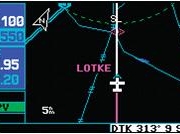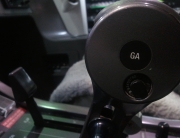You can ask any pilot around the world, flying any type of airplane. There is no better satisfaction than to finish a long day’s worth of flying with a real “kisser”, literally touching down on the runway with the softness of a romantic kiss in the sunset… no really!!!
That being said, I have to say that despite this urge to make every landing feel like a egg sliding on a well greased pan, I have found myself in situations where it is not at all… advisable. And sadly, it has been a common pitfall that I believe every pilot experiences every once in a while. How? Why? let me explain.
Example A: The tailwind landing.
No later than yesterday, I found myself faced with a dilemma. Accept a small tailwind (let’s say 5 kts) to save a few minutes, or execute a full VFR circuit to land into the wind? If most pilots are like me, they will take the easy solution and go with option A. 5 kts tailwind is generally considered benign and although it will affect the landing distances, it is of no factor on a long runway. So where’s the catch?
Well everything went well until the flare. Then a small adjustment in pitch during the flare led to a balloon. Not wanting to let the airplane settle down too hard following the balloon I elected to keep the nose up to soften the blow and slow down the descent. That high angle of attack, coupled with a performance decreasing tail wind ended up putting the airplane in a near-stall situation during the flare; I had to over-ride the airplane’s pusher system once the flight controls started shaking as a warning of an impending stall, before it forcefully pushed the nose down… into the very sturdy asphalt surface of the runway!
Lesson of this story: As “easy” to handle as a “small” tailwind may seem appear, always be ready to react to changing conditions and things that are not part of the plan. You might be forced to accept a steeper rate of decent during a flare and stronger contact with the runway than usual. Avoid high angles of attack during the flare as they may lead to a rapid stall if the wind picks up.
Example B: Gusty winds/Wind shear
Last week I was confronted with a slightly different situation. Landing at night at a familiar airport, the controller reported a small but steady crosswind of about 10 kts. No real problem, as the airplane is rated to sustain up to 30 kts. However, the situation changed rapidly as a rain shower moved across the field, reducing the visibility and adding gusts to the wind. Approaching 2 miles final the controller reported crosswind of 10kts, gusting 18kts. Yikes!
Battling with gusty winds and some wind shear, flaring in fog-like conditions proved to be… interesting. But I had made my decision early and chose a faster speed, leading to a firm, positive contact with the runway. The plan was to avoid floating and leaving the airplane susceptible to abrupt stalls or loss of control during slow speed flare with rapidly changing winds.
In the end, the landing was indeed pretty hard, but I think it was better than trying to flare and try for a soft, slow touch-down.
Example C: Short field landing gone bad!
A while ago I decided to try myself at a short field landing. Problem is, I ended up on short final a bit high and fast and realized that I was most likely not going to touch down at my desired spot. In a last-ditch desperate attempt to save my pride and make it as I said I would, I released the backwards pressure applied during the flare to let the airplane sink and ended up basically smashing the poor machine on the ground, followed by a majestic rebound, earning the affectionate “WORST LANDING” record from the medics in the back.
In this occasion, no external factors led to the incident. Instead, my own pride and bad judgement led me to make a very rookie mistake which led to a pretty rough outcome.
Opinions may vary, but the fact is that landing remains the most demanding and challenging part of every flight. No single pilot has had a perfect score of great landings, and every pilot can boast in the warm memory of a “perfect” one. No matter what it takes though, keep the safety and professionalism on the top priorities for every landing, and put the pride in the back seat. You will never regret it.





Leave A Comment